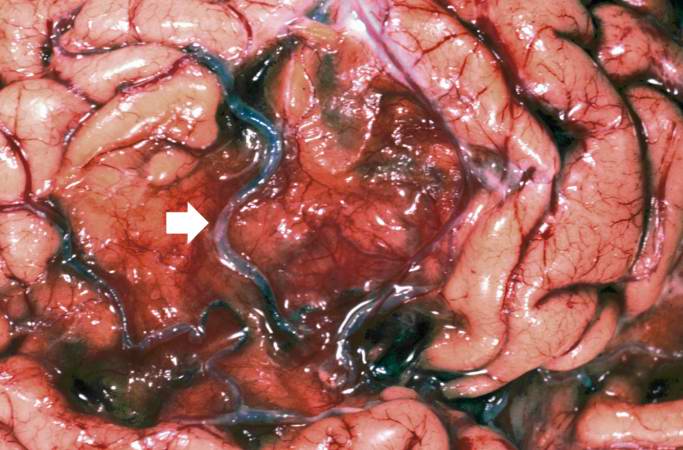Stroke case study one
|
Stroke Main page | |
|
Diagnosis | |
|---|---|
|
Treatment | |
|
Case Studies | |
|
Stroke case study one On the Web | |
|
American Roentgen Ray Society Images of Stroke case study one | |
Editor-In-Chief: C. Michael Gibson, M.S., M.D. [1]
Case #1
Clinical Summary
Eight years prior to his demise, this 48-year-old black male had a dissecting aortic aneurysm. The first portion of the aortic arch was dilated with an associated aortic valve insufficiency.
The defect was repaired and a mechanical prosthetic valve was implanted. One year prior to his terminal admission, the patient experienced a catastrophic cerebrovascular accident (CVA) with left hemiparesis and obtundation. The patient experienced severe neurologic sequelae from this CVA and was eventually transferred to a nursing home where he was bedbound and required an indwelling urinary catheter.
The patient developed a urinary tract infection and was transferred to the hospital. The patient's condition deteriorated and he died 6 weeks after admission with a urinary tract infection and pneumonia.
Autopsy Findings
Autopsy showed the expected findings in the aorta and in a 760-gram heart. The mechanical valve showed some deterioration and there was old thrombotic material adherent to the valve, which was probably the source of the emboli which caused the patient's CVA. The patient's 1250-gram brain showed extensive old infarctions in at least three different areas, with the largest (12.5 x 5.5 cm) in the distribution of the right middle cerebral artery.
Gross Pathology




Microscopic Pathology






